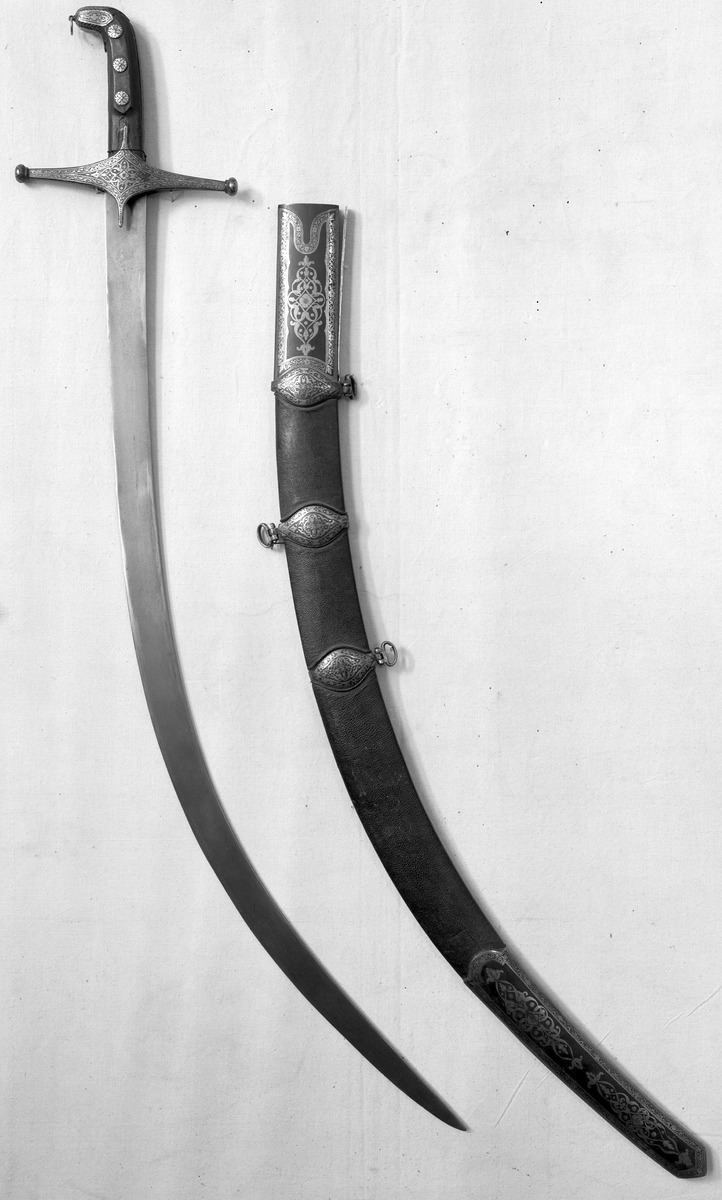 | ||
Shamshir or the Mameluke sword which belongs to the Seljuk empire swords and it took the Persian name (Shamshir) when it was brought to Persia by the Islamic Seljuk Empire Seljuk Khanate in the 12th century, Originally Persian swords were straight and double edged. The curved scimitar blades were Central Asian Turkic Muslims in origin. and it is a type of sabre with a curve that is considered radical for a sword: 5 to 15 degrees from tip to tip. The name is derived from Persian: شمشیر shamshīr, which means "sword" (in general). The radically curved sword family includes the shamshir, scimitar, Talwar, kilij, Pulwar and the sabre.
Contents
A Shamshir Shekargar (Persian: شَمشیر شکارگَر shamshir-e shekârgar; literally, "hunters' sword" or "hunting sword") is the same as a shamshir, except the blade is engraved and decorated, usually with hunting scenes.
Description
Originally Persian swords were straight and double edged. The curved scimitar blades were Muslims of Central Asian in origin. The earliest evidence of curved swords, or scimitars, is from the 9th century, when these weapons were used by soldiers in the Khurasan region of Central Asia. The sword now called a "shamshir" was introduced to Iran by the Turkic Seljuk Khanate in the 12th century and was later popularized in Persia by the early 16th century, and had "relatives" in Turkey (the kilij), the Mughal Empire (the talwar), and the adjoining Arabian world (the saif) and (the sam-saam).
The shamshir is a one-handed, curved sword featuring a slim blade that has almost no taper until the very tip. Instead of being worn upright (hilt-high), it is worn horizontally, with the hilt and tip pointing up. It was normally used for slashing unarmored opponents either on foot or mounted; while the tip could be used for thrusting, the drastic curvature of blade made accuracy more difficult. It has an offset pommel, and its two lengthy quillons form a simple crossguard. The tang of the blade is covered by slabs of bone, ivory, wood, or other material fastened by pins or rivets to form the grip. Many of the older Persian shamshir blades are made from high quality crucible wootz steel, and are noted for the fine "watering" on the blades.
Etymology
Although the name has been associated by popular etymology with the city of Shamshir (which in turn means "curved like the lion's claw" in Persian) the word has been used to mean "sword" since ancient times, as attested by Middle Persian shamshir (Pahlavi šmšyl), and the Ancient Greek σαμψήρα / sampsēra (glossed as "foreign sword").
"Shamshir" is usually taken to be the root of the word scimitar, the latter being a more inclusive term.
